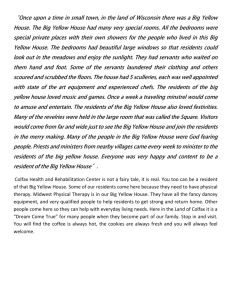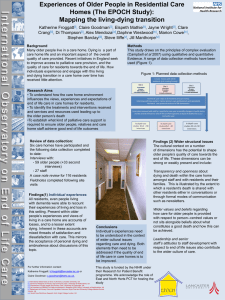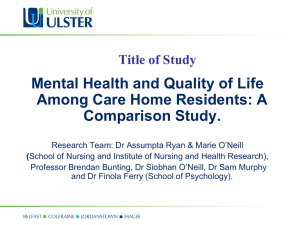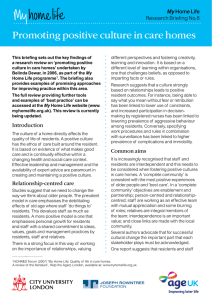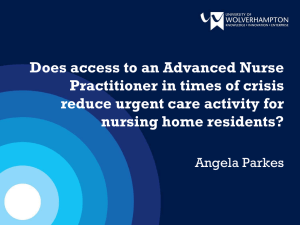Care Handbook A Family Guide
advertisement
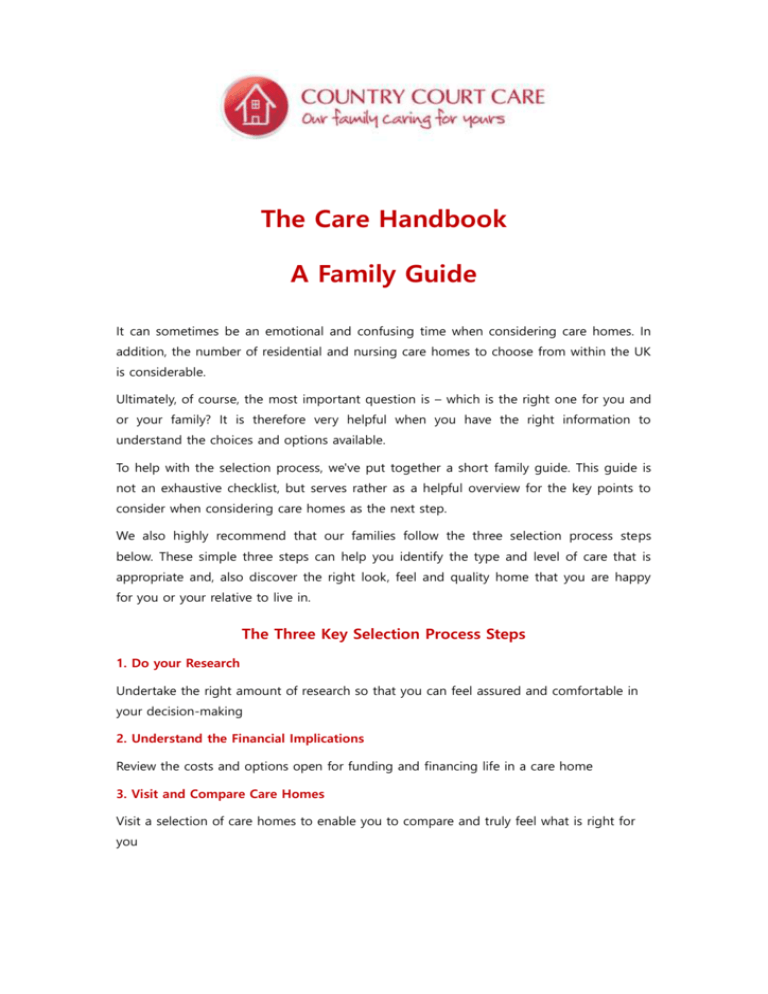
The Care Handbook A Family Guide It can sometimes be an emotional and confusing time when considering care homes. In addition, the number of residential and nursing care homes to choose from within the UK is considerable. Ultimately, of course, the most important question is – which is the right one for you and or your family? It is therefore very helpful when you have the right information to understand the choices and options available. To help with the selection process, we've put together a short family guide. This guide is not an exhaustive checklist, but serves rather as a helpful overview for the key points to consider when considering care homes as the next step. We also highly recommend that our families follow the three selection process steps below. These simple three steps can help you identify the type and level of care that is appropriate and, also discover the right look, feel and quality home that you are happy for you or your relative to live in. The Three Key Selection Process Steps 1. Do your Research Undertake the right amount of research so that you can feel assured and comfortable in your decision-making 2. Understand the Financial Implications Review the costs and options open for funding and financing life in a care home 3. Visit and Compare Care Homes Visit a selection of care homes to enable you to compare and truly feel what is right for you A Family Guide 1. Obtain an assessment from medical professionals or social services Whether you are self-funded or not, it is always worth involving social services as the assessment and information they can provide is likely to be very helpful in making a very important decision – where to live. 2. Identify the best possible location for you and your family Some people are anxious for a loved one to live very close by, to better facilitate regular visits. Is the care home easily accessible by road and train? Are there shops and other facilities nearby? 3. Meeting cultural, social, religious and ethnic needs Another key element when making a selection is finding not only the right community of people that you will comfortable living with on a day-to-day basis, but also one that can accommodate your dietary requirements or ethnic and religious beliefs. 4. Focus on the level of personal care This is arguably the critical issue – what are your expectations regarding the level of personal care? To what degree is the care truly person-centred? What is the ratio of carer: resident that you are comfortable with? Does the care home create bespoke lifestyle arrangements, or are residents expected to adapt to a general routine? 5. Keeping active and involved How active a lifestyle would you like to pursue? What facilities, programmes and event calendars are in place? Are residents expected to follow and participate in everything or to what degree can they create their own individual activity programme with like-minded people? 6. Level of independence What is the care philosophy, both in theory and in practice? How does the care home maximise independence for residents? What evidence is there that people are being fully supported to lead an independent life as possible? Can residents come and go as they please? How accommodating is the care home regarding residents making personal arrangements for trips, events and family activities? 7. Excellent communications What is the type and level of communication between staff, staff and residents, staff and families and staff and the community? How do people interact: is it always an open door policy, with multiple avenues of communication open? How flexible is the care home when it comes to accommodating your communication preferences? 8. Inspection reports What is the CQC report rating of the care home that you are interested in? What aspects of the inspection report are you particularly interested in? What are the good clues/signs of well-run care home or one that has very high standards that you need to look for when visiting a care home?



